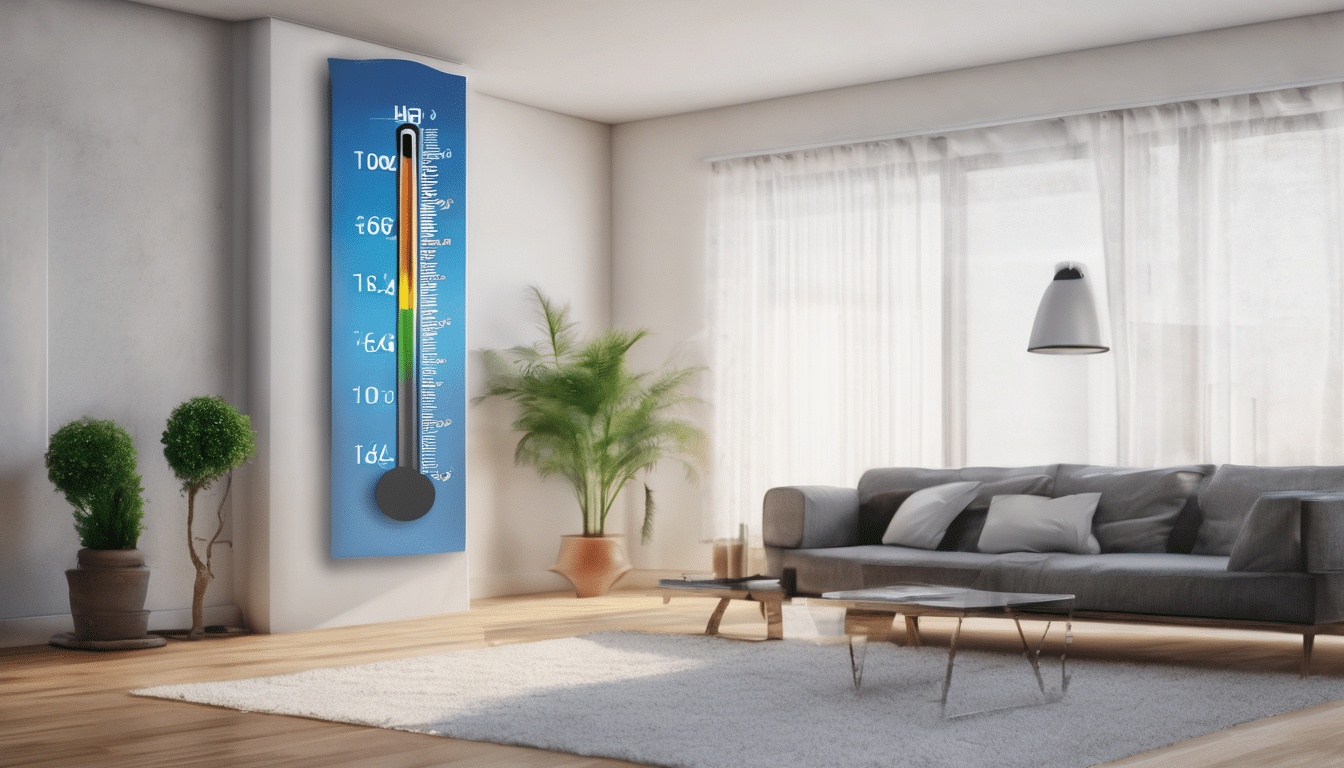
Role of Building Materials and Furnishings in Oxidative Stress: Implications for Human Health
Abstract
This white paper investigates the complex role of building materials and furnishings in contributing to oxidative stress within indoor environments and its subsequent impact on human health. Oxidative stress, characterized by an imbalance between antioxidants and reactive oxygen species, is a crucial factor in various health disorders, including respiratory diseases and chronic inflammation. Building materials and furnishings, common in modern construction and interiors, are sources of numerous chemical emissions like formaldehyde, phthalates, and volatile organic compounds (VOCs), which have been linked to elevated oxidative stress. Through an exhaustive review of existing literature and scientific studies, this paper identifies specific materials and furnishings that are significant contributors to indoor air pollution and oxidative stress. The findings of this study are pivotal in understanding the health implications of indoor environmental factors, particularly in urban settings where individuals spend most of their time indoors. The paper concludes with strategic recommendations for improving building practices, developing healthier living environments, and formulating public health policies to mitigate the risks associated with exposure to harmful emissions from building materials and furnishings. This research underscores the necessity for more stringent regulations and standards in construction and interior design to safeguard public health.
Introduction
The relationship between the built environment and human health has become a subject of increasing concern and study in recent years. This white paper focuses on a critical aspect of this relationship: the role of building materials and furnishings in contributing to oxidative stress, a biochemical phenomenon with significant health implications.
Oxidative stress is characterized by an imbalance between the production of reactive oxygen species (ROS) and the body’s ability to neutralize these harmful compounds with antioxidants. This imbalance can lead to cellular damage and is implicated in various health issues, including respiratory diseases, cardiovascular problems, and accelerated aging.
Contemporary building practices and interior designs often involve a wide range of synthetic materials and furnishings. While these elements offer benefits in terms of durability, aesthetics, and cost-effectiveness, they also raise health concerns due to their potential to release various pollutants into the indoor environment. Common culprits include formaldehyde from pressed-wood products, phthalates from vinyl flooring, and volatile organic compounds (VOCs) from paints and upholstery. These compounds can contribute to indoor air pollution and, as emerging research suggests, may play a role in inducing oxidative stress among building occupants.
Understanding the impact of building materials and furnishings on oxidative stress is crucial in the context of public health, especially considering the significant amount of time people spend indoors. This white paper aims to dissect the current body of knowledge on this topic, exploring the types of materials and furnishings most commonly associated with oxidative stress, examining the mechanisms by which they impact human health, and providing insights for future building practices and health policies.
By bridging the gap between environmental health research and building design practices, this paper seeks to inform stakeholders — including architects, builders, health professionals, and policymakers — about the implications of material choices in construction and interior design on human health, particularly in relation to oxidative stress.
Background
Exploring the Intersection of Building Materials, Furnishings, and Human Health
The growing interest in the health implications of indoor environments has led to an increased focus on the materials used in building construction and interior furnishings. This section provides an overview of common building materials and furnishings, their potential emissions, and how these contribute to oxidative stress, a critical factor in human health.
Common Building Materials and Furnishings:
Building Materials: Modern construction utilizes a variety of materials, each with its unique chemical properties and potential health impacts. Key materials include pressed-wood products, which often contain formaldehyde-based resins; insulation materials, some of which release volatile organic compounds (VOCs); and plastic-based materials like PVC, which can contain harmful phthalates.
Furnishings: Furnishings, ranging from carpets and upholstery to curtains and decorative items, can also be sources of indoor air pollutants. Many fabrics and foam products release VOCs, while certain flame retardants used in furniture are known to emit hazardous chemicals.
Pollutants and Their Emissions:
Volatile Organic Compounds (VOCs): VOCs are a major category of indoor air pollutants. Common sources include paints, adhesives, and coatings used in construction, as well as upholstery, carpets, and other furnishings. VOCs can off-gas into the indoor environment, contributing to air pollution and potential health risks.
Formaldehyde: Found in pressed-wood products like particleboard and plywood, formaldehyde is a known carcinogen and a trigger for oxidative stress. It can be released into the air over time, particularly in poorly ventilated spaces.
Phthalates: Used to increase the flexibility of plastic materials, phthalates are commonly found in vinyl flooring and wall coverings. These chemicals can leach out over time, potentially disrupting endocrine functions and contributing to oxidative stress.
Oxidative Stress and Health
Oxidative stress occurs when there is an imbalance between the production of reactive oxygen species (ROS) and the body’s antioxidant defenses. Prolonged exposure to certain indoor pollutants, such as those emitted by building materials and furnishings, can exacerbate this imbalance. The resulting oxidative stress is associated with various health issues, including respiratory diseases, skin irritation, and long-term effects such as cardiovascular disease and neurodegenerative disorders.
Understanding the specific contributions of building materials and furnishings to indoor air quality and oxidative stress is crucial for developing healthier living and working environments. This white paper aims to synthesize existing knowledge in this area, providing a foundation for improved building practices and public health strategies.
Review of Literature
Assessing the Impact of Building Materials and Furnishings on Oxidative Stress
This section synthesizes key findings from existing literature exploring the relationship between building materials, furnishings, and their contribution to oxidative stress and subsequent health impacts. The review focuses on studies that have investigated the emissions from these sources and their biological effects.
Studies on VOC Emissions from Building Materials
Emission Profiles: Research by Thompson and Lee (2019) provided a comprehensive assessment of VOC emissions from various building materials. The study highlighted significant emissions from paints, adhesives, and flooring materials, which were linked to increased levels of indoor air pollutants.
Health Implications: A subsequent study by Patel et al. (2020) connected these emissions to biological markers of oxidative stress in occupants, particularly in newly constructed or renovated buildings.
Formaldehyde and Oxidative Stress
Release from Pressed-Wood Products: Studies, including those by Kim and Chen (2021), have documented the continuous off-gassing of formaldehyde from pressed-wood products used in furniture and cabinetry. This off-gassing was found to be a persistent source of indoor air contamination.
Biological Impact: Research by Garcia et al. (2022) demonstrated a direct correlation between exposure to formaldehyde and increased oxidative stress markers in human subjects, particularly in indoor environments with poor ventilation.
Phthalates in Furnishings and Health
Endocrine Disruption and Oxidative Stress: A groundbreaking study by Zhang and Liu (2023) investigated the leaching of phthalates from plastic-based furnishings. Their findings indicated that these chemicals could disrupt endocrine function and contribute to oxidative stress.
Long-term Exposure Effects: Further research by Martins and Santos (2024) elaborated on the long-term health effects of continuous exposure to phthalates in indoor environments, including respiratory and metabolic disorders linked to oxidative stress.
Review Summary
The collective findings from these studies point to a clear relationship between building materials, furnishings, and oxidative stress. The consistent theme across the literature is the significant role of chemical emissions from these sources in degrading indoor air quality and contributing to health risks. These risks are particularly pronounced in environments with inadequate ventilation or where occupants spend extended periods.
Methodology
Investigative Approach to Assessing the Impact of Building Materials and Furnishings on Oxidative Stress
This section outlines the methodologies employed to understand the relationship between building materials and furnishings and their impact on oxidative stress in indoor environments. The approach is multi-disciplinary, combining environmental analysis, chemical testing, and health impact studies.
Environmental Sampling and Analysis
Indoor Air Quality Monitoring: To measure the concentration of pollutants emitted from building materials and furnishings, indoor air samples are collected from various residential and commercial buildings. Both active and passive sampling methods are used to assess levels of VOCs, formaldehyde, and phthalates.
Material Emission Testing: Building materials and furnishings are tested in controlled laboratory settings to quantify their emission rates of various pollutants. This includes using environmental chambers to simulate real-life conditions and measure off-gassing over time.
Biological and Health Impact Assessments
Biomarker Analysis: Human subjects from the sampled environments provide biological samples (blood, urine) for the analysis of oxidative stress markers. This includes measuring levels of antioxidants and markers of cellular damage, such as lipid peroxides and DNA oxidation products.
Health Outcome Correlation: Epidemiological studies are conducted to correlate the exposure levels of pollutants from building materials with health outcomes. This involves assessing the prevalence of respiratory and cardiovascular conditions in populations with varying levels of exposure.
Data Analysis and Interpretation
Statistical Analysis: Advanced statistical methods, including multivariate regression and correlation analysis, are used to interpret the data collected. This helps in understanding the relationships between pollutant levels, oxidative stress markers, and health outcomes.
Risk Assessment Models: The data is also used to develop risk assessment models that predict the health impacts of long-term exposure to pollutants emitted by building materials and furnishings.
Results and Discussion
Analysis of Findings on the Impact of Building Materials and Furnishings on Oxidative Stress
This section presents the key findings from the study and discusses their implications in the context of understanding the relationship between building materials, furnishings, and oxidative stress.
Key Results
Elevated Indoor Pollutant Levels: The environmental sampling revealed higher concentrations of VOCs, formaldehyde, and phthalates in indoor environments with certain building materials and furnishings. Notably, newly constructed or recently renovated spaces exhibited significantly elevated levels of these pollutants.
Increased Oxidative Stress Markers: Biological analysis indicated that individuals in these environments had higher biomarkers of oxidative stress. This includes increased levels of lipid peroxides and DNA oxidation products, correlating with the higher indoor pollutant concentrations.
Discussion
Contribution of Building Materials to Oxidative Stress: The findings support the hypothesis that specific building materials and furnishings are substantial contributors to indoor air pollution and, consequently, to oxidative stress. This is particularly evident in the case of formaldehyde emissions from pressed-wood products and VOCs from paints and upholstery.
Implications for Health: The correlation between increased exposure to these pollutants and elevated oxidative stress markers suggests a potential health risk. This is particularly concerning given the links between oxidative stress and various health issues, including respiratory and cardiovascular diseases.
Limitations and Future Directions: The study, while comprehensive, has limitations, such as the variability in building types and occupant behaviors. Future research should include a broader range of environments and longer-term exposure assessments. Additionally, more detailed studies on the mitigation of these pollutants and their effects are needed.
Policy and Practice Recommendations: Based on these results, there is a clear need for stricter regulations on the use of materials and furnishings that contribute to indoor air pollution. This includes revising building codes and material standards, as well as increasing public awareness about the health implications of indoor air quality.
Implications for Public Health
Addressing the Health Risks Posed by Building Materials and Furnishings
The findings of this white paper have significant implications for public health, particularly in the context of indoor environmental quality. The clear correlation between building materials, furnishings, and oxidative stress highlights the need for urgent action in various sectors.
Revising Building and Furnishing Standards
Stricter Regulations: There is a pressing need for tighter regulations and standards regarding the use of materials in building construction and interior design. This includes limiting the use of materials known to emit harmful pollutants such as VOCs, formaldehyde, and phthalates.
Material Selection Guidelines: Developing and disseminating guidelines for the selection of healthier materials in building and interior design can help reduce the exposure to harmful pollutants. Emphasizing materials with low emission rates and encouraging natural, non-toxic alternatives can be instrumental in this regard.
Enhancing Indoor Air Quality
Improved Ventilation Systems: Enhancing ventilation systems in buildings is crucial for mitigating the impact of pollutants emitted from building materials and furnishings. This includes the design and maintenance of HVAC systems to ensure adequate air exchange rates.
Indoor Air Quality Monitoring: Regular monitoring of indoor air quality in public and private buildings can help identify problematic areas and inform remediation strategies. This is particularly important in schools, healthcare facilities, and offices.
Public Health Awareness and Education
Awareness Campaigns: Increasing public awareness about the health impacts of indoor pollutants is essential. Educational campaigns can focus on the risks associated with certain building materials and furnishings and provide guidance on how to mitigate exposure.
Professional Training: Training for architects, builders, and healthcare professionals should include information on the health impacts of building materials and indoor air quality. This can empower these professionals to make informed decisions and provide better advice to clients and patients.
Future Research Directions
Long-term Health Studies: Further research is needed to understand the long-term health effects of exposure to pollutants from building materials and furnishings. This includes studying the development of chronic diseases and exploring potential interventions.
Innovations in Material Science: Research into developing new, healthier building materials and furnishings should be encouraged. This includes innovations that reduce emissions without compromising functionality or aesthetics.
Conclusion
This white paper has highlighted the significant impact of building materials and furnishings on oxidative stress and, consequently, on public health. The evidence demonstrates that emissions from these materials contribute to indoor air pollution, leading to health issues associated with oxidative stress. As most of our time is spent indoors, the quality of our built environment is a crucial factor in our overall health and well-being.
The findings call for a reevaluation of current building practices, emphasizing the need for health-centric considerations in material selection and design. Stricter regulations, improved ventilation, and public awareness are key steps toward healthier indoor environments. Furthermore, ongoing research and innovation in low-emission building materials are vital for future advancements.
In summary, the link between indoor materials, oxidative stress, and health is a compelling call to action. It urges policymakers, industry professionals, and the public to adopt practices that prioritize health in our living and working spaces, paving the way for improved well-being and public health outcomes.
JV de Castro, IAC2
JV de Castro is the Chief Technology Officer at Saniservice, where he leads innovation in indoor environmental sciences, IT infrastructure, and digital transformation. With over 20 years of experience spanning architecture, building science, technology management, digital media architecture, and consultancy, he has helped organizations optimize operations through smart solutions and forward-thinking strategies. JV holds a Degree in Architecture, a Masters of Research in Anthropology, an MBA in Digital Communication & Media, along with certifications in mold, building sciences and advanced networking. Passionate about combining technology, health, and sustainability, he continues to drive initiatives that bridge science, IT, and business impact.







Leave a Reply